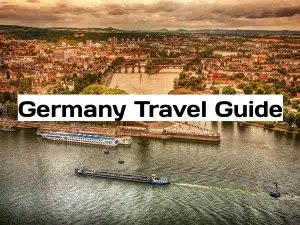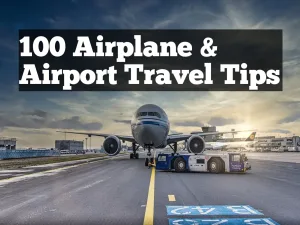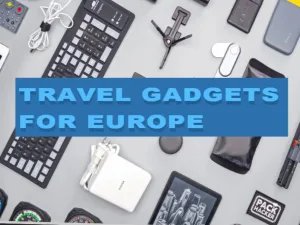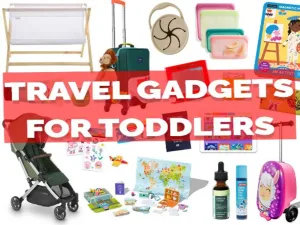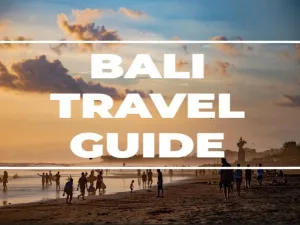The Philippines Travel Guide provides accurate and concise information for exploring this beautiful country. Step into a world of stunning beaches, vibrant cities, and rich cultural heritage.
Discover the pristine islands of Palawan, dive the crystal-clear waters of Tubbataha Reefs Natural Park, and immerse yourself in the bustling city life of Manila. Visit historical landmarks like the UNESCO-listed Paoay Church and explore the underground river in Puerto Princesa.
Indulge in the local cuisine, from delicious street food to savory seafood dishes. Whether you’re seeking adventure, relaxation, or cultural experiences, the Philippines offers a diverse range of options for every traveler. So pack your bags and get ready for an unforgettable journey through this tropical paradise.

Exploring The Beauty Of The Philippines (introduction)
The Philippines, an archipelago of over 7,000 islands, is a country that captivates the imagination with its natural wonders, cultural heritage, and warm embrace. From stunning landscapes to hidden gems waiting to be discovered, this Southeast Asian gem offers an adventure of a lifetime. Whether you’re a nature enthusiast, history buff, or simply seeking a memorable beach getaway, the Philippines has something for everyone.
1. The Diverse Landscapes And Rich Culture Of The Philippines:
The Philippines is a land of contrasts, where you can witness the beauty of mountains, pristine beaches, lush rainforests, and bustling cityscapes all in one country. With its diverse landscapes, each region showcases its own unique attractions. The North boasts majestic mountain ranges, like the famous Cordillera, home to the UNESCO World Heritage site of Banaue Rice Terraces. In Central Visayas, you’ll find the famous Chocolate Hills in Bohol, an otherworldly landscape of nearly identical mounds.
But it’s not just the natural beauty that makes the Philippines special – it’s also the rich culture and history that permeates every corner of the country. From the Spanish-era fortresses in Manila to the well-preserved ancestral houses in Vigan, you can immerse yourself in the country’s colonial past. And let’s not forget the vibrant festivals that are celebrated throughout the year, showcasing local traditions and folklore.
2. Must-visit Destinations And Hidden Gems:
When it comes to must-visit destinations, the Philippines has plenty to offer. One of the most popular spots is the Puerto Princesa Underground River, a UNESCO World Heritage site in Palawan that takes you through a fascinating underworld of limestone caves and crystal-clear waters. Another must-see is the Boracay Island, renowned for its stunning white sand beaches and vibrant nightlife.
However, the true beauty of the Philippines lies in its hidden gems, those lesser-known destinations that promise an off-the-beaten-path adventure. Take, for example, the Batanes Islands, a remote province that offers breathtaking landscapes, rugged coastlines, and a unique cultural experience. Or head to Caramoan in Camarines Sur, a paradise for beach lovers and adventure seekers, with its limestone cliffs, hidden lagoons, and crystal-clear waters.
3. Experiencing The Warmth And Hospitality Of The Filipino People:
Aside from its natural wonders, one of the things that make the Philippines truly special is the warmth and hospitality of the Filipino people. Filipinos are known for their genuine smiles and welcoming nature, making visitors feel right at home. Whether you’re exploring the busy streets of Manila or venturing into remote provinces, you’ll always be greeted with open arms and a friendly “Mabuhay!”
It’s this genuine hospitality that creates unforgettable travel experiences. From sharing a hearty meal with a local family in Batanes to joining a traditional barangay fiesta, you’ll have the chance to connect with the locals and gain insights into their way of life. No matter where your adventures take you in the Philippines, you’ll surely leave with not only memories of its breathtaking beauty but also the warmth and kindness of its people.
Planning Your Trip To The Philippines
The Philippines is a tropical paradise that offers breathtaking landscapes, pristine beaches, and a rich cultural heritage. Whether you’re planning a solo adventure or a family vacation, careful planning is essential to make the most of your trip. In this guide, we’ll take you through important factors to consider when planning your trip to the Philippines, including the best time to visit, visa requirements, and choosing the right accommodation options.
Best Time To Visit The Philippines For Optimal Weather
When it comes to the weather, the Philippines experiences a tropical climate with two distinct seasons: the dry season and the wet season. To fully enjoy your trip, it’s crucial to visit during the optimal weather conditions. The best time to visit the Philippines is generally during the dry season, which runs from December to April. During this period, you can expect less rainfall, lower humidity, and plenty of sunshine.
However, it’s worth noting that certain regions of the country may have slightly different weather patterns. For instance, if you plan to visit popular tourist destinations like Boracay or Palawan, the months of January to March are considered the peak tourist season due to the favorable weather conditions.
Visa Requirements And Travel Documents
Before embarking on your journey to the Philippines, it’s important to familiarize yourself with the visa requirements and travel documents necessary for your stay. Fortunately, citizens of many countries are eligible for visa-free entry or visa-on-arrival for a specific period. To determine the specific visa requirements for your nationality, it’s recommended to check with the Philippine embassy or consulate in your home country.
In addition to visa requirements, make sure you have a valid passport with at least six months of remaining validity. It’s also advisable to carry copies of important travel documents, such as your passport and travel insurance, as well as store digital copies in a secure online location. Taking these precautions ensures a smooth and hassle-free travel experience.
Choosing The Right Accommodation Options
When it comes to accommodation options, the Philippines offers a wide range of choices to suit every traveler’s preferences and budget. Whether you’re looking for luxury resorts, budget-friendly guesthouses, or immersive homestays, you’ll find something suitable in every corner of the country.
For those seeking a beach getaway, beachfront resorts in popular destinations like Boracay, Cebu, or Siargao are a popular choice. These resorts often provide amenities such as private beaches, swimming pools, and water sports facilities. On the other hand, if you prefer immersing yourself in the local culture, opting for homestays or guesthouses in smaller towns and villages can offer an authentic experience.
To help you make an informed decision, it’s advisable to read reviews from fellow travelers and compare different accommodation options. Additionally, consider factors such as location, proximity to attractions, and the availability of amenities that are essential to your travel needs.
Getting Around In The Philippines
The Philippines is a breathtaking tropical paradise made up of thousands of islands, each offering its own unique charm and beauty. As you plan your visit to this diverse country, it is essential to consider the best ways to get around and explore all that it has to offer. From navigating the airports and transportation hubs to the various modes of public transportation within the country, and even options for renting a car or hiring a private driver, this guide will help you explore the Philippines with ease and flexibility.
Navigating The Airports And Transportation Hubs
With several international airports and transportation hubs across the country, getting to and around the Philippines is convenient and accessible. The major airports include Manila’s Ninoy Aquino International Airport, Cebu’s Mactan-Cebu International Airport, and Clark International Airport in Pampanga. These airports serve as gateways to the beautiful islands and cities throughout the country.
Upon arrival at the airport, you can find a range of transportation options to suit your needs. Taxis are a popular choice, and you can easily locate them outside the arrival halls. Make sure to choose metered taxis or agree on a fixed fare before setting off. Another option is to book a ride through ride-sharing apps, such as Grab, which are widely used and reliable in major cities like Manila.
Public Transportation Options Within The Country
Once you have arrived at your desired destination, public transportation is readily available for exploring the local attractions and moving from one place to another. Here are some of the common public transportation options you can consider:
- Jeepneys: These iconic, brightly colored jeep-like vehicles are a popular mode of transportation in the Philippines, especially in urban areas. They follow specific routes and are an affordable way to get around. Just wave your hand to signal the driver and hop on!
- Tricycles: Found in both urban and rural areas, tricycles are motorcycles with a sidecar. They are ideal for short distances and exploring narrow streets and alleys.
- Buses: Buses are a convenient way to travel between cities and provinces. There are different types of buses available, from air-conditioned coaches to traditional non-air-conditioned buses.
- Trains: The Philippines has a developing train system, particularly in Metro Manila. The LRT (Light Rail Transit) and MRT (Metro Rail Transit) offer efficient transportation within the city, with stations conveniently located near major attractions.
Renting A Car Or Hiring A Private Driver For More Flexibility
If you prefer more flexibility and convenience during your travels in the Philippines, renting a car or hiring a private driver is a great option. This allows you to explore at your own pace and visit off-the-beaten-path destinations. Many car rental companies operate in major cities and tourist areas, offering a variety of vehicles to suit your needs.
Alternatively, you can opt to hire a private driver who can act as your personal guide, providing insider knowledge and taking you to the best spots. This option gives you the freedom to customize your itinerary and make spontaneous stops along the way.
It is important to note that driving in the Philippines can be challenging due to traffic congestion and different driving styles. Make sure you are familiar with local traffic regulations and drive with caution.
In conclusion, navigating the Philippines is a breeze with the wide range of transportation options available. Whether you choose to navigate the airports and transportation hubs, utilize the public transportation within the country, or opt for renting a car or hiring a private driver, you can explore the stunning beauty and immerse yourself in the rich culture of the Philippines with ease and convenience.
Discovering The Top Attractions
The Philippines is a tropical paradise brimming with breathtaking attractions that will leave you in awe. From pristine beaches to colorful coral reefs to stunning viewpoints, there is no shortage of natural wonders to explore. In this Philippines travel guide, we will take you on a journey to discover the top attractions that will make your trip truly unforgettable.
Immerse Yourself In Filipino Culture
When it comes to immersing yourself in a rich and diverse culture, the Philippines offers a myriad of experiences that will leave you enchanted. From vibrant festivals and mouthwatering cuisine to traditional crafts and arts, there are countless opportunities to dive deep into Filipino culture and create lasting memories.
Experiencing The Colorful Festivals And Traditional Celebrations
Immerse yourself in the lively spirit of the Philippines by attending the country’s colorful festivals and traditional celebrations. These events showcase the Filipinos’ love for music, dance, and storytelling, and are a testament to their vibrant heritage. Whether you find yourself captivated by the Sinulog Festival in Cebu, where the streets burst with energetic dancers donning vibrant costumes, or the Pahiyas Festival in Lucban, where houses are adorned with colorful rice decor, each festival provides a unique and unforgettable experience.
Sampling The Delectable Local Cuisine, From Adobo To Halo-halo
No trip to the Philippines is complete without indulging in the nation’s delectable local cuisine. Filipino food is a delightful fusion of flavors, influenced by various cultures and regions. From the iconic adobo – tender meat marinated in soy sauce and spices – to the refreshing halo-halo – a delicious mix of crushed ice, sweet beans, jellies, and fruits – your taste buds are in for a treat. Don’t forget to try other Filipino favorites, such as sinigang, crispy pata, and lechon, which will have you craving for more.
Learning Traditional Crafts And Arts From Local Artisans
Immerse yourself in the beauty of Filipino craftsmanship by learning traditional crafts and arts from local artisans. Through workshops and demonstrations, you can intimately discover the intricate details of hand-weaving, pottery making, and wood carving, among others. These skills have been passed down through generations and are an important part of Filipino culture. By engaging with local artisans, you not only support their livelihoods but also gain a deeper appreciation for the art forms that define the Philippines.
Outdoor Adventures In The Philippines
When it comes to outdoor adventures, the Philippines offers a treasure trove of thrilling experiences. From scaling majestic volcanoes to surfing world-class breaks, and trekking through breathtaking landscapes, this tropical paradise has something for every adventure seeker. Immerse yourself in the beauty of the country’s natural wonders and embark on an unforgettable journey through some of the most thrilling outdoor activities in the Philippines.
Scaling The Magnificent Mayon Volcano In Albay
One of the most iconic landmarks in the Philippines, the Mayon Volcano in Albay, is a sight to behold. With its near-perfect cone shape, this active volcano offers a challenging climb that attracts adventurers from around the world. The ascent may be tough, but the reward is absolutely worth it. As you conquer this mighty volcano, you’ll be rewarded with panoramic views of the surrounding countryside and the breathtaking beauty of the Albay Gulf. Whether you’re an experienced climber or a novice looking for an adrenaline rush, scaling the Mayon Volcano is an adventure you won’t want to miss.
Surfing The World-class Breaks Of Siargao Island
If you’re a surfing enthusiast, Siargao Island should be at the top of your Philippines travel itinerary. Known as the “Surfing Capital of the Philippines,” Siargao boasts world-class breaks that attract surfers from all corners of the globe. Whether you’re a beginner looking to catch your first wave or an advanced rider seeking an adrenaline-pumping challenge, Siargao’s famous Cloud 9 surf break offers a little something for everyone. With its consistent waves and vibrant surfing community, this island paradise is a must-visit destination for surfers of all levels.
Trekking Through The Breathtaking Rice Terraces Of Banaue
Uncover the beauty of the Philippines’ cultural heritage as you trek through the awe-inspiring rice terraces of Banaue. Carved into the mountainside by the indigenous Ifugao people over 2,000 years ago, these terraces are a testament to their ingenuity and resourcefulness. Walking through the lush green fields, surrounded by cascading rice paddies, is a truly magical experience. The natural beauty combined with the rich cultural heritage of the Ifugao people makes this trek an unforgettable adventure. Immerse yourself in the local culture, interact with the friendly locals, and marvel at the wonder of these man-made marvels as you explore the breathtaking landscapes of Banaue.
Safety And Practical Tips For Traveling In The Philippines
Discover safety and practical tips for traveling in the Philippines with our comprehensive travel guide. From transportation and accommodation advice to cultural etiquette tips, we’ve got you covered for a worry-free and enjoyable trip.
Staying Safe In Tourist Areas And Remote Locations
When traveling to the Philippines, it’s important to prioritize your safety, whether you’re exploring popular tourist areas or venturing into remote locations. Here are some practical tips to keep you safe throughout your journey:
- Research and choose reputable accommodations in safe areas.
- Avoid displaying expensive belongings or large amounts of cash.
- Stay vigilant and aware of your surroundings, especially in crowded tourist spots.
- Keep your belongings secure at all times, using anti-theft bags or money belts.
- Use reliable transportation options, such as registered taxis or reputable ride-hailing apps.
- Remember to protect yourself from the sun and stay hydrated, especially in tropical regions.
- Seek local advice or hire guides when exploring remote locations or engaging in adventurous activities.
- Stay updated with the latest travel advisories and follow the guidance of local authorities.
Dealing With Currency Exchange And Managing Your Finances
Managing your finances effectively during your trip to the Philippines is crucial to avoid any unwanted hassles. Here’s what you need to know:
| Tip | Description |
|---|---|
| 1 | Carry a mix of local currency (Philippine Peso) and international credit/debit cards. |
| 2 | Exchange currency at authorized money changers or banks for better rates and security. |
| 3 | Keep small bills and change for convenient and hassle-free transactions. |
| 4 | Notify your bank about your travel plans to avoid any issues with your cards. |
| 5 | Use ATMs from reputable banks and avoid standalone machines in remote areas. |
| 6 | Track your expenses and keep a record of your financial transactions. |
Communicating And Navigating The Language Barriers
While English is widely spoken in the Philippines, there can still be language barriers, especially in more remote areas. Here are some tips to help you communicate and navigate effectively:
- Learn a few basic Filipino phrases, such as greetings and common expressions.
- Utilize translation apps or carry a pocket dictionary for quick reference.
- Stay patient and use simple words and gestures to convey your message.
- Seek assistance from hotel staff or local authorities when in doubt.
- Consider hiring local tour guides who can help bridge the communication gap.
Responsible Tourism In The Philippines
When it comes to exploring the beautiful islands of the Philippines, responsible tourism should be a top priority. Sustainable tourism practices, supporting local communities, and respecting cultural norms are all integral components of responsible travel in this diverse archipelago. By implementing these principles, visitors can help protect the environment, contribute to local economies, and preserve the cultural richness of the Philippines. In this article, we will delve into the various aspects of responsible tourism in the Philippines, highlighting sustainable practices, community support, and cultural respect.
Sustainable Tourism Practices To Protect The Environment
The Philippines boasts breathtaking landscapes, from pristine white sand beaches to lush mountains and vibrant coral reefs. It is our responsibility as travelers to preserve these natural wonders for future generations. By adopting sustainable tourism practices, we can minimize our ecological footprint and protect the environment.
- Choose eco-friendly accommodations that have implemented green initiatives, such as using renewable energy, reducing water consumption, and practicing waste management.
- Support eco-tourism activities that promote conservation efforts, such as marine protected areas and reforestation projects.
- Engage in responsible snorkeling and diving practices, ensuring not to touch or damage corals, and using reef-friendly sunscreen.
- Reduce single-use plastic consumption by carrying a reusable water bottle and shopping bag.
Supporting Local Communities And Economies
One of the most rewarding aspects of responsible tourism is the ability to positively impact local communities. By supporting local businesses and initiatives, travelers can contribute to the economic growth and empowerment of the people in the areas they visit.
- Stay in locally-owned accommodations or homestays, which directly benefit the community.
- Buy souvenirs and products from local artisans and markets, supporting local craftsmanship and entrepreneurship.
- Eat at local restaurants and street food stalls, trying traditional dishes and contributing to the local culinary scene.
- Participate in community-based tourism activities, such as village tours or homestay experiences, to learn about the local way of life and directly engage with the community.
Respecting The Cultural Norms And Traditions Of The Philippines
The Philippines is a culturally diverse country with a rich heritage. When traveling in the country, it is essential to be respectful of the local customs, traditions, and ways of life.
- Dress modestly when visiting religious sites or participating in cultural events.
- Learn basic greetings and phrases in the local language, showing respect for the local culture.
- Observe local customs and traditions, such as removing shoes before entering a home or place of worship.
- Ask for permission before taking photographs of people or their property, respecting their privacy.
By embracing responsible tourism practices, we can make a positive impact on the environment, local economies, and cultural preservation in the Philippines. Let’s explore this beautiful archipelago with respect and mindfulness, leaving behind nothing but footprints and unforgettable memories.
Frequently Asked Questions For Philippines Travel Guide
What Do I Need To Know About Traveling To The Philippines?
To travel to the Philippines, you should know that it’s a beautiful country with stunning beaches. You must have a valid passport, visa if required, and abide by local laws. Be aware of the weather conditions, customs, and traditions. Take precautions for your safety and health, and enjoy the diverse culture and cuisine.
Is It Safe To Travel To Philippines Today?
Yes, it is safe to travel to the Philippines today.
What Month Is The Best To Visit Philippines?
The best month to visit the Philippines is from December to February because of the pleasant weather and fewer chances of rain.
How Many Days Are Enough For Philippines?
A week is enough to explore the Philippines and enjoy its beautiful beaches, vibrant cities, and cultural attractions.
Conclusion
To wrap up, the Philippines offers a plethora of breathtaking sights and immersive experiences. From its pristine beaches and vibrant coral reefs to its rich culture and warm, welcoming people, this archipelago is an explorer’s paradise. Whether you’re seeking adventure, relaxation, or a taste of local cuisine, the Philippines has it all.
So pack your bags, get ready for a unique journey, and be prepared to create memories that will last a lifetime. Happy travels!



